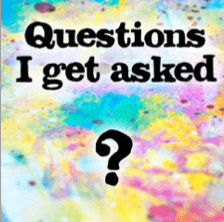
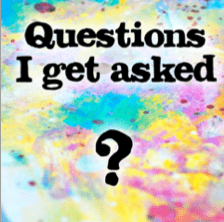
Hallo beautifuls!
In this post I will answer the questions I get asked most by email in an attempt to help people send me less emails! (Hee hee and of course: to help you all with your creative business endeavours, may all your creative dreams, soar and become true with stars, strawberries and cream on top! But pleaaeaeaeaease stop asking me questions about it be- cause I am on the verge of insanity as it is already with the little kiddos, a household to clean and a business of my own to run anyway! ;))
How I produce my Art Prints
Probably the number one question in my inbox is ‘how do I print my prints’, wellll, here ya go:
I print my prints myself at home (see process below). I don’t have a printer place print them out for me, though that’s also a route you could go down. I prefer to do my own because;
a. You make more profit when you do it yourself and therefore worth my while.
b. I have creative control, know what my print will look like and can add extras in the package
So this is how I do it:
- I scan my original art piece unless it is a large canvas, then I photograph it with either my Nikon D80 or my Canon 60D. For scanning I currently use a Canon Lide 100 Scanner. If I have a piece of art on watecolour paper that is larger than the scanner I’ll scan it in parts and ‘knit’ it together in photoshop. I and that with scanning you get a much clearer image, brilliant detail and colour (sometimes adjusted in photoshop). No matter how good your camera the clarity is never as crisp as scanning, so if and where I can I scan rather than photograph.
- I might make a few adjustments in Photoshop depending on how the scan/ photo came out. Note: make sure to have your monitor/ screen CALIBRATED. The colours you see on your screen are sometimes not what your printer/ Photoshop thinks they are. So you may have adjusted a whole lot only to and out that the print comes out much darker than you had it on the screen. Calibration across da nation is apparently the answer.
- Paper – I print my prints on yman’s Fine Art Inkjet Card 190gsm or on double sided high quality watercolour paper (Bockingford) 190gsm with high quality durable inks (canon uses inks that are ‘ChromaLife 100+’ which means the print is fade-resistant for 100 years).
4. Printer – I used to print on an Epson stylus d120 photo printer. Now I print on a Canon IP4600 (I just upgraded to a CANON PIXMA IP4950 as my IP4600 packed up) – all are very good. If a customer wants a larger than A4 print I might order one o an online printer or go to the local print place here.
5. Sending/ shipping. I send my print in a protective cellophane sleeve protected by 2 thick pieces of cardboard and an A4 envelope.
6. I often include little business cards or postcards in my packages. I get my ordered over at moo.co.uk whose quality is superb. (If you want to order some, click on my link and you’ll get 10% o on your rst order!).
How I price my original paintings
The 2nd most frequent question I get asked!
This is a personal choice/ preference and can vary greatly from artist to artist depending on how popular your art is and how much you simply want to charge for it.
My formula -roughly- is: I look at the materials used, the size of the piece of art and the amount of time I spent creating it. I also decide on an hourly rate for my time which is used to calculate the original price of the painting.
So the formula = costs of Materials + set price for size + hourly rate x how long it took me. Give or take a bit here and there. Make sense?
Some artists, however, charge thousands of pounds/ dollars for their original art. This is related to status/ how coveted your art is by collectors/ perceived value & worth of your art work.
Do a google search on this to find out more. There are interesting debates on this.
How I price illustrations for a book
A question asked less often, still I’ll answer it here.
Book illustrations are tricky because not only do you need to think about pricing, you also need to think about ‘who gets to keep the rights’ and if your illustrations are full colour/ bw only or some colour only etc.
Download this handy (or maybe confusing) little spreadsheet to see how I price my illustrations for books. Use this as a guide, you can go lower if you’re just starting to or you may want to charge a lot more. Up to you, naturally.
How I create my videos + Camera Set Up + Lights
I used to film my lessons on a JVC Everio HD Camera and a Canon 60D. My JVC recently died, I still recommend their webcams, but I now use a Canon Legria HFG25 for my lessons and the Canon 60D for the F2F stuff. I used to edit my videos in windows moviemaker on a laptop, I now edit everything in Final Cut Pro on a Mac. – Camera set up: When I just started I used to have a the camera on a tripod, which stood on my desk with the camera facing straight down onto my paper. I would then rotate the footage in the video editing program. I now have some snazzy equipment that hangs above my art making desk. It’s a metal bar that is design to ‘roll things’ back and forth. I have a camera arm (Manfrotto) hanging on it. For lights I have a continuous lighting kit like this.
How I started selling art and how I grew my creative business
Obviously, there is A LOT to this. If you are someone interested in setting up your own creative business, you may be interested in joining my up and coming business course. But some of the basics: I started to sell my art on etsy.com. Open up a shop and then start letting people know about it. I also started doing free, inspiring art tutorials on youtube which people loved and made them interested in my art and teaching. It’s all about being known liked and trusted. Good luck with your creative business! :)
How I stop my water colour paper from buckling/warping
Best way: tape it down on all 4 sides before you starting working, this way it’s stretched into position and it simply can’t warp. If you can’t tape it down: don’t go too heavy on the water, water makes your paper warp. If you use a lot of materials work on strong sturdy paper made for heavy materials; minimum 140lbs. Also: don’t despair too much, quite open warped/ buckled paper smooths out after you’re finished. You can also place it under a heavy pile of books to smooth out more.
From Itaya1: I wanted to offer a suggestion for helping artwork lie at when working on watercolor paper. I use 140 lb paper and will coat one side with Gesso and let completely dry while gently pressing it down in the center with the tip of a paint brush handle. This only takes a few minutes. When that side is dry, I then ip it over and paint with Gesso on the back side and will do the same with a paint brush handle to help flatten it down as it is drying. Once it is pretty much dry, I then lay something heavy on it and let it continue to dry. Every time it comes out smooth and at and ready to paint on either side and will not buckle when you apply your paints! I do primarily work with acrylic paints and not sure if I’ve done this with water colors so might need to experiment with that.
How I stop my journal pages from sticking to each other
Mine don’t tend to stick much to each other. But I notice they stick more when I’ve used a lot of acrylic’s paints. My suggestion is to put other types of sheets in between the pages like rice paper or something other that is soft-ish. This will protect them and stop them from sticking.
What materials did I use in x video
I don’t know/ remember, but I’ll tell you the materials I used the most and love:
- Watercolour crayons: Caran D’ache Neocolor II
- Acrylics paints by Daler-Rowney and Golden
- Derwents watercolour pencils
- Faber-Castell watercolour pencils
- Supracolor II So watercolour pencils Caran D’ache
- Gel mediums by Golden & Liquitex
- Fav brushes: Pro Arte – Acrylix – England
- Fav paper: Hot pressed watercolour paper 140lbs – The Langton – Daler-Rowney/ Water- ford & Saunders
- Spray inks: Dylusions
- Liquid Acrylic Inks by Daler-Rowney
- Graphite Mechanical Pencil: Pentel Sharplet-2 – 0.9 – Weight: 2b
- Black gelpens: Uniball Vision Elite 0.8
- Markers: posca/ aquamarkers/ tombow/ sakura
My favourite journal (the black one with the green bind) is a Roberson Watercolour Sketchbook, sadly they are only available in the UK apparently. You can order them here.
What music did I use in x video
I don’t know/ can’t remember, but if you watch the video to the end (on youtube) I usually mention the band name/ music source. The music I use nowadays most prominently in my youtube and lesson videos is the music by Kevin MacLeod from www.incompetech.com – He allows people to use his music royalty free for both personal and commercial purposes (though I donate money to him on a a frequent basis to express my gratitude). I have also bought a license to use the music from jewelbeat.com so the music I used in my videos is either from Final Cut Pro, incompetech.com or jewelbeat.com. I also sometimes buy licences on audiojungle.net.
Should you use a fixative on your paintings/journal pages?
I’ll be honest with you here: I’m a fixative dummy. In art school we sprayed fixative over charcoal drawings for the obvious reasons: smudging. As I understand it; paintings that contain acrylics do not need fixative as -effectively- acrylics is plastic and won’t disintegrate/ discolour over time. That said, I’ve just bought a fixative by Winsor & Newton ‘Artists” Satin Varnish which I will use on some of my mixed media paintings for protection. I’ll do some more research on this and any tips, feel free to leave in the comment section! :)
Info on fixatives from Ey:I have something to offer re: fixatives! If you’re layering with water reactive stuff, like Dylusions or Adirondack colorwash, watercolour paints/crayons/pencils, or Gelatos, and you don’t want them to smear, use a ‘workable fixative’. My fave is Krylon. Same applies to layering with pan pastels or chalk pastels. A quick layer of fixative will prevent those layers from smudging.
Info on fixatives from Sunny: I also use Krylon’s workable fixative when using water-based products. I also use Krylon’s Crystal Clear spray varnish on large pieces where brush-ons are harder to use or I’ve used water-based materials. (Note: do not use Krylon’s varnishes on paper. It makes the paper look greasy.) When doing paintings where 95% of it is acrylic, I use Americana’s Triple Thick Gloss Glaze varnish. It’s super thick (obviously) and it makes a hard, non-yellowing, protective, almost plastic layer over the whole thing. It makes it look almost machine made and it makes glitter POP. I also use Liquitex varnishes (gloss) for the sides of my canvases because the Triple Thick is too much for that. Hope that helps!
Info on fixatives from Micky Wilde: As for varnishes and fixatives, I think I’ve tried everything on the market lol. Krylon was what I used to use but they stopped selling it in the UK due to some regulations thing? You can still import it and a few places might still have some but it’s generally not worth the hassle. I now use pebeo spray satin picture varnish on all my mixed media paintings and pebeo spray matte picture varnish on my art dolls. I seriously love pebeo, I was a krylon junkie until I found pebeo and now I would never go back. I and the smell less offensive too.
Info on fixatives from Lucy Chen: I use Golden’s varnishes to protect my acrylic paintings. And if you read their product info sheets, you would know that they recommend you apply a permanent non-removable layer, which is a mixture of So Gel Gloss and water, first before you apply the varnish. This way, you painting stays intact if the varnish layer needs to be removed for restoration of the art later. And they specifically suggest not to apply matte varnish directly Because the matting agent can blur the painting if applied directly.
***
Ok, that’s most of what I’m being asked a lot a lot a lot. If you have another pressing question or want to add to this post with your hints and tips leave me a message and I’ll update the post. Mucho thankies ja ja.
Hope this helps you gorgeous bunch of my groovy art gang tribe. I love you! Stop emailing me! ;))))) Big hugs. x
Tam x
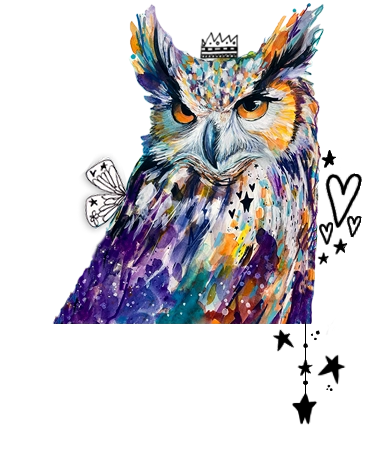

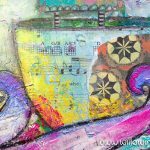
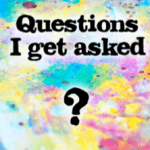

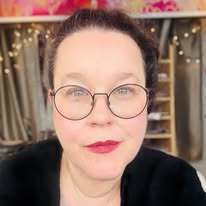

Comments: